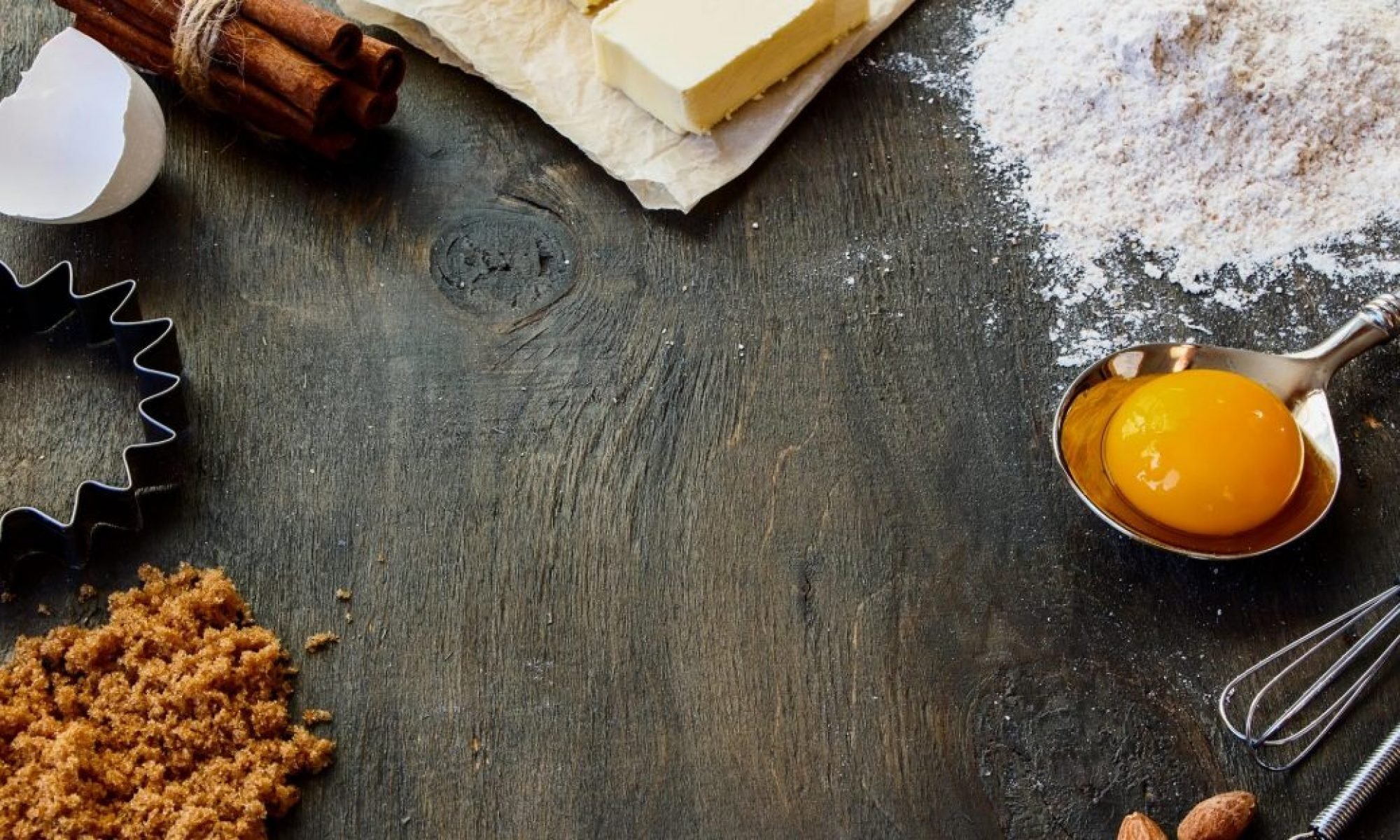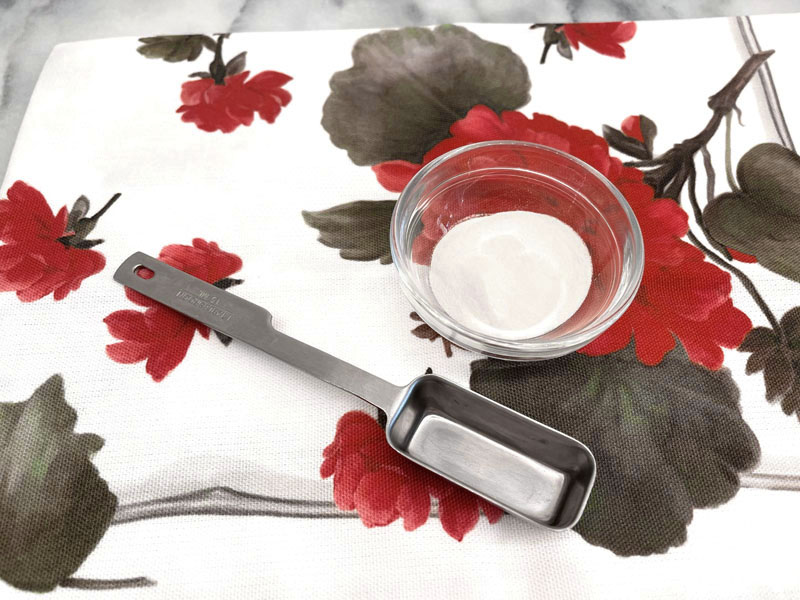Learn how to use xanthan gum from my over 13 years of gluten free recipe development for manufacturers as well as the general public. View the chart showing how much xanthan gum to use in different types of gluten free recipes. Many people who are just beginning a gluten free diet wish to know what xanthan gum is and if it contains any allergens. Learn all of the above as well as how it effects your digestive tract.
What is Xanthan Gum?
Newbies to gluten free baking often ask “What is xanthan gum?” The answer to this question can be found in detail along with its possible effects and digestive benefits in the article, “Is Xanthan Gum Safe?”
What Does Xanthan Gum Do?
Gluten free ingredients that you use in baking lacks gluten, which is the gluey substance that holds dough and batter together. Without gluten or a similiar substitute such as xanthan gum, your baked goods will collapse when they begin to rise.
You see, xanthan gum, like gluten surround air bubbles formed in baked goods, which creates structure, much like steel beams create structure in a building. They hold everything up, creating a sturdy baked good (or building).
Gums such as xanthan gum is also an emulsifier in things like salad dressing. This gummy substance combines liquids and oil so that they do not separate easily.
Xanthan gum also thickens sauces, jams, pudding, and ice cream.
How Much Xanthan Gum to Use?
Some years during my recipe development business I developed a new gluten free recipe to share with the public each and every day. While other times I spent perhaps two straignt weeks or more developing just one recipe for a client. Those experiences have provided me with a plenty of experience with xanthan gum as well as other gums, which I share with you in the below chart.
| Where? | How Much? | How to Use Xanthan Gum? |
| Breads | 1 teaspoon per cup of flour | When totalling the combined dry ingredients (flours, starches, ground seeds, etc.) in the gluten free bread recipe, use 1 teaspoons xanthan gum per cup of dry ingredients. |
| Cakes | 1/2 teaspoon per cup of flour | As you can see in gluten free all purpose flour blend, I use 2-1/2 teaspoons xanthan gum per 4-1/2 cups of dry ingredients. That is a a tiny bit more than 1/2 tesapoons (exactly .55 teaspoons) per each 1 cup (134 grams) of dry ingredients. |
| Cookies | 1/2 teaspoon per cup of flour | Same as the above, in the cakes section. |
| Gravies & Sauces | 1 teaspoon in place of each tablespoon brown rice flour or gluten free all purpose flour | Xanthan gum holds up extremetly well in sauces, even upon reheating. Again, combine xanthan gum with dry ingredients, if you have some. Then add any liquids. However, when only using xanthan gum as the dry ingredient, combine it with a little oil, adding the oil slowly while constantly whisking. Then add it your sauce to thicken it. As with any thickener (flour or starch), once added to liquid, bring the sauce to a boil while constantly whisking until thick. |
| Ice Cream | 1/2 teaspoon in per quart of ice cream | Whisk together xanthan gum into sugar and/or any other dry ingredients such as cocoa powder. Then, stir in the wet ingredients. |
| Muffins & Quick Breads | 1/2 teaspoon per cup of flour | Because gluten free flour is heavier than traditional all-purpose flour, I like to keep the levels of xanthan gum inmy muffins and quick breads the same as cakes. If I choose to make them dense, I instead use a different method of mixing. |
| Pizzas | 1/2 or more teaspoon per cup of flour | As you can see in the Gluten Free New York Pizza Crust Recipe, I use 1/2 teaspoon xanthan gum per cup of dry ingredients. However, if you enjoy really chewy pizza, go ahead and add more. |
Salad Dressings | 1/4 teaspoon, or to your liking, per cup of liquid | Combine xanthan gum with dry ingredients such as salt, pepper, seasonings, etc. Then, whisk in the oil. Lastly whisk in additional liquids such as vinegar, buttermilk, etc. |
What Can I Use as a Xanthan Gum Substitute?
Guar Gum: If you experience digestive issues with xanthan gum (it is a mild laxative), or if you are highly allergic to corn (most xanthan gum in the United States is made from corn), you may wish to use guar gum instead. However, in most cases, you’ll need to use a little more guar gum compared to xanthan gum. It really depends upon how chewy the ingredients are in your recipe. Generally, you’ll need to use 1-1/4 to 1-1/2 time the amount of xanthan gum called for in the recipe.
Psyllium Husk Powder: Another alternative is to use psyllium husk powder. When making bread, I generally triple the amount of xanthan gum and add equal amounts of water to the recipe. (Psyllium husk powder is different than whole psyllium husk and should be used in different amounts.) Most brands of psyllium husk powder create a dark tan color in baked goods. I recently discovered blonde psyllium husk powder that does not efffect the color of baked goods.
Learn more Xanthan Gum Substitutes.
Learn more Gluten Free Substituions.



Hi there… thanks for the information about xanthin gum use and how much. Are you suggesting the same amounts if the GF flour blend being used already has xanthin gum in it? Looking forward to your reply! I was a great baker pre-celiac, but I am struggling to produce great results with GF baking. Thanks!
Steve,
You’re very welcome.
No. I am not suggesting to use this much xanthan gum when a flour blend already contains gum(s) or other binder. There is no way to find out how much xanthan gum a flour blend contains. I highly recommend my homemade flour blend: https://glutenfreerecipebox.com/gluten-free-all-purpose-flour-blend/. Please read the entire page so that you know how to use it to achieve gluten-like results.
I hope this helps.
Carla